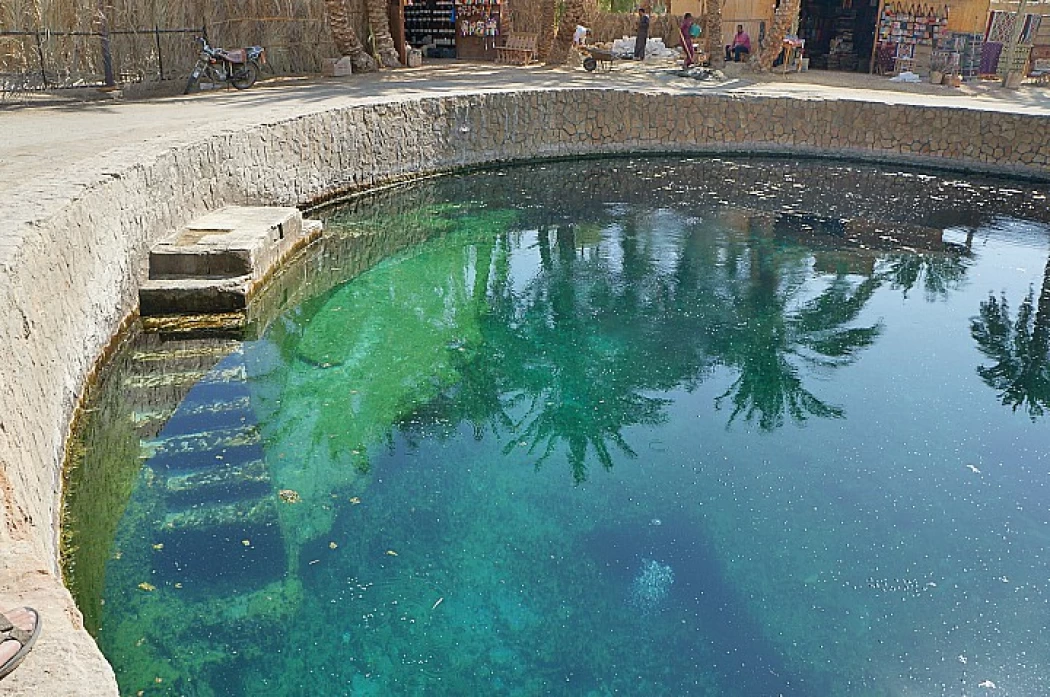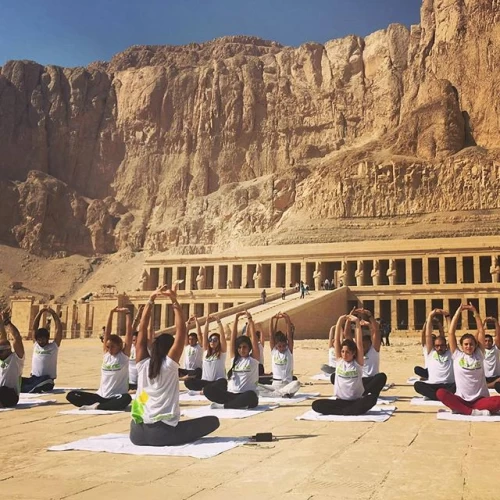
The Natural Water Springs in Egypt
Pharaoh's bath is a natural sulphurous water springs in Egypt, located in the city of Abu znima, South Sinai governorate, in the southern part of Ras Sidr city, located 5 km from Abu znima and 110 km from Tor and 250 km from the capital Cairo, it is a group of springs with 15 springs from which hot water flows from inside a cave in the mountain located near the beach in the form of a pool with a strength of 3000 cubic meters per day approximately and stretches on the beach with a length of 100 meters, adjacent to sea water. The temperature flowing from the eye reaches 92 degrees Celsius, making it the hottest water among the eyes, Springs, and Hot Wells in Egypt, numbering 1450 eyes, Springs, and Wells.
Pharaoh's bath
It is a group of springs with 15 eyes, from which hot water flows from inside a grotto in the mountain located near the beach in the form of a pool with a strength of 3000 cubic meters per day approximately and stretches on the beach with a length of 100 meters, which is adjacent to sea water. The temperature flowing from the eye reaches 92 degrees Celsius, making it the hottest water among the eyes, Springs, and Hot Wells in Egypt, numbering 1450 eyes, Springs, and Wells. The water flowing from these eyes has been analyzed chemically and bacteriologically and the results of the analyzes have proven its validity and high effectiveness in the treatment of many diseases such as rheumatoid, rheumatism of all kinds, gastrointestinal diseases, kidney diseases, lung allergies, liver diseases, skin diseases, in addition to its benefits used for cosmetic purposes. Chemical analyses have also shown that the water contains high concentrations of sulfur above the rates of its counterparts in the mineral waters of the world.
Health resort
Due to the mild year-round climate enjoyed by the region, the dry atmosphere and the vast areas of warm sand that can be used for physiotherapy, surrounded by a series of mountains, made it an excellent location to establish a tourist health resort under the name of "Pharaoh baths resort", considered the first and unique of its kind in Egypt and the Middle East, this resort, which is still under construction, is a tourist village and an ecotherapy center combining medical, recreational and sports tourism.
Egypt is known for its cities, mineral and sulfur water, dry, moisture-free weather, and soil of sand and silt, which is proper for treating numerous diseases, especially skin diseases and any disease marked by inflammation and pain in the joints, muscles, or fibrous tissue, especially rheumatoid arthritis. Due to its distinctive natural properties, Egypt has a multiplicity of beaches and seas. Many sulfur and mineral eyes are spread in Egypt.
Famed for its deserts and ancient wonders, have you heard about Egypt's natural water springs that induce relaxation and healing and wow with fabulous views? If you're interested in complete seclusion, soaking in warm mineral water, and an adventure in the desert, here are some of the best natural water springs in Egypt that are worth a visit.
This natural water also contains several mineral salts and some minerals of therapeutic value such as sodium carbonate and varying proportions of some metal elements. It is like magnesium and iron, and it is distinguished by its depth, amplitude, and temperature which ranges between 30 and 70 degrees Celsius.
Laboratory analyses have shown the proportion of salinity in these natural water resources for hospitalization, in addition to the availability of silt in the bottoms of these sulfur-water springs with its therapeutic properties that cure many bone diseases, diseases of the digestive system, respiratory system, skin diseases, etc. It has also been proven that it is very beneficial in the case of treating arthritis patients by burial in the sand. It has passed through and produced economically in recent years, within the framework of strict scientific control on quality and standard specifications.
The number of natural eyes in Egypt is 1450 eyes, fountains, and wells that spread throughout Egypt east and west, some of which are found in the Western Desert by entering oases and marine oases, including what is found in Cairo like the Helwan eyes group and Ain Sirah, some of which are in the Eastern Desert, some of which are in Sinai such as Pharaoh's spring and Moses water spring are among the features of medical tourism in Egypt.
Many natural water springs spread throughout Egypt, the most important of which is Siwa Oasis, which lies to the west of Marsa Matrouh by about 300 km. It occupies the forefront position among the optimal places for medical tourism and natural hospitalization in Egypt and is characterized by charming poetic calm, air purity, the purity of the sky, and mild temperature, which can be visited with Cairo Top Tours by booking Egypt day tours.
About 180 kilometers from Hammam Musa, there is a mountain cave in the city of Abu Zenima from which extremely hot sulfur springs erupt, with temperatures ranging between 55 and 75 degrees Celsius, reaching the boiling point.
The sulfur springs in Abu Zenima are known as «Pharaoh's Bath» and their hot water flows into the sea without benefiting from it. However, some tourism companies obtained approvals to exploit the area and transform it into a tourist and therapeutic resort, and began constructing concrete structures, but they were not completed.
Musa Baths are characterized by a temperature of 37 degrees throughout the year and their water is rich in sodium and magnesium. It is located in South Sinai, one of the most famous medical tourism places in the governorate.
Hammam Musa is located 5 kilometers from Tur Sinai –the capital of the governorate - surrounded by many palm trees, and has sulfurous waters with multiple mineral elements.
It is noteworthy that the sodium found in the water of Hammam Musa helps speed up wound healing, while magnesium helps the color cells in the skin regain their vitality, to restore the natural color of the skin, and has a strong effect on treating various skin diseases such as vitiligo, psoriasis, and skin tags.















